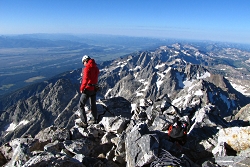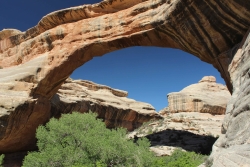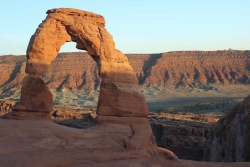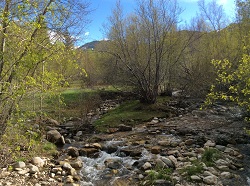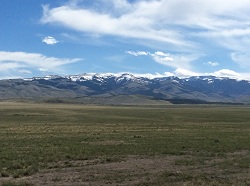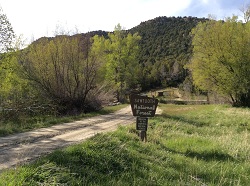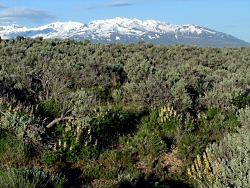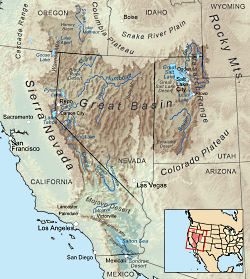Grand Teton virtual climb
Photo Courtesy NPS
K Kanes, Photographer
Begin Tour
(Requires Adobe Flash Player)
Scaling “the Grand,” that picturesque mountain that hangs over Jackson, Wyoming, along with its battleship-gray sisters in the Teton Range, was a ridiculous thought that found harbor in the back of my mind in the spring of 1985 when I first glanced up at the peak.
Along with a dozen or so other neighboring peaks that rise above 10,000 feet, the Tetons form a ponderous, jagged stretch of rock that is the Lower 48’s most arresting mountain range. The soul of Grand Teton National Park, the Grand as it’s known harbors world-class climbs.
Some climbers tackle the mountain on their own, while neophytes such as myself are herded ever upward under the watchful guidance of one of Jackson’s two resident climbing outfitters, Exum Mountain Guides and Jackson Hole Mountain Guides.
To me, an Easterner by birth, the 13,770-foot tall Grand Teton is a breathtaking, and incredibly tall, mountain. But climb it? Not only am I usually most comfortable with both feet firmly planted flat on the ground, but the thought of only a thin rope and a precarious hand- or toe-hold between me and an incredible long way down scared the hell out of me, quite frankly.
The view from atop the Grand Teton is incredible. To the west, the Jedediah Smith Wilderness stands. To the north, Yellowstone National Park. To the east, Jackson Hole, with the moraine that is Timbered Island so very well defined.
Now, if you haven’t climbed to the roof of Grand Teton National Park, or can’t, you can still enjoy the view.
A new virtual tour produced by the park staff takes you from the Jackson Hole Valley to the summit from the comfort of your living room or office. No cold or pelting rain, no thunder claps or lightning strikes, just a nice mix of interactive still photos and video cuts that take you to the top.
This virtual mountaineering excursion—or eClimb, as the park dubs it—provides an introduction to the features, geology, history, and excitement of scaling the granite ledges and spires that form the Grand Teton massif: the highest peak in the Teton Range and second highest mountain in Wyoming. This web-based tour introduces viewers to the various elements (rocky terrain, plants and wildlife) that exist in Grand Teton’s forest and alpine communities.
As an eClimber you can control images and sounds at each stop along your virtual tour, and you can activate videos to explore the human and natural history related to each location along the climbing route. By hovering your mouse over a photograph, hidden images will be revealed through the click of a button.
eClimbers can also use videos to imagine scrambling over boulder fields and wedging through rocky alcoves as they experience the thrill of climbing and drama of a mountain rescue in a virtual landscape.
To find this virtual climb, go to Grand Teton’s website (www.nps.gov/grte) and click on “Grand Teton eClimb” near the bottom of the home page.
For Wild About Utah, this is Kurt Repanshek with National Parks Traveler
Credits:
Image: Courtesy USGS, www.usgs.gov
Image: Courtesy and Copyright Kurt Repanshek, www.nationalparkstraveler.com
Text: Kurt Repanshek, NationalParksTraveler.com.
Additional Reading:
National Parks Traveler: Climb The Grand Teton…Virtually!

